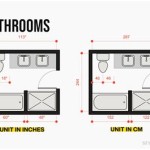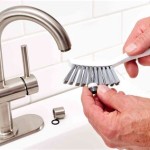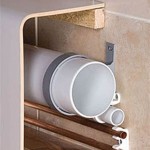Is A Bathroom Without A Tub Considered A Full Bath?
The classification of a bathroom as a "full bath" is a common point of consideration in real estate, renovation, and even casual conversation about home design. While the presence of a bathtub is frequently associated with the term, the precise definition can be surprisingly nuanced and often subject to regional variations and local codes. Understanding what constitutes a full bath versus a half bath, three-quarter bath, or powder room is crucial for accurate property valuation, effective communication during home sales or rentals, and making informed decisions about bathroom remodeling projects. This article aims to dissect the criteria typically used to categorize a bathroom, focusing specifically on the role of the bathtub in determining if a bathroom without one can still be considered a full bath.
The understanding of bathroom classifications is not just about semantics; it directly impacts property values. A home with multiple full baths generally commands a higher price than one with fewer. Similarly, the number of full baths is a key feature listed in real estate advertisements and property descriptions. Therefore, a clear grasp of the accepted definitions is essential for both buyers and sellers. Furthermore, when planning renovations, knowing the impact of removing or replacing a bathtub on the overall classification of the bathroom is vital for maintaining or increasing the home's value. Finally, for renters, understanding what constitutes a full bath helps them accurately assess the suitability of a property based on their needs and expectations.
Traditionally, and in many areas still today, a full bath is defined by the presence of four key elements: a toilet, a sink, a bathtub, and a separate shower (or a combination bathtub/shower). However, modern bathroom design trends and evolving building codes are leading to a re-evaluation of this traditional definition. The growing popularity of walk-in showers, the increasing emphasis on accessibility for individuals with mobility challenges, and the space-saving benefits of shower-only bathrooms in smaller homes are all contributing to a shift in perspective. This shift raises the question: Can a well-appointed bathroom with a toilet, sink, and a high-quality shower be considered a full bath, even without a bathtub?
The Traditional Definition of a Full Bath
The traditional definition of a full bath, as noted, centers around the presence of four essential fixtures. The reasoning behind this definition is rooted in the perceived functionality and completeness of the bathroom as a space for personal hygiene. The bathtub is seen as providing a means for soaking and relaxation, while the shower offers a quick and efficient way to cleanse the body. The toilet is, of course, a necessary fixture for sanitary purposes, and the sink provides a place for washing hands, teeth brushing, and other personal grooming tasks. The combination of these four elements, according to the traditional view, constitutes a fully functional and complete bathroom.
This traditional understanding is still prevalent in many parts of the country and is often reflected in real estate listings and appraisals. In older homes, particularly, the presence of a bathtub is often considered a non-negotiable requirement for a bathroom to be labeled as "full." This is because the historical context of these homes often dictated that bathing was primarily done in a tub, with showers being a less common or even non-existent feature. As such, the absence of a bathtub in an older home's bathroom might be perceived as a deviation from the original design and a potential detractor from the property's value, especially if the home is being marketed for its historical charm.
However, even within the traditional framework, there can be variations in interpretation. For instance, some real estate professionals may consider a bathroom with a combination bathtub/shower to fulfill the "bathtub" requirement, while others may insist on a separate bathtub and shower to qualify as a full bath. These nuances highlight the importance of clarifying the specific criteria being used when discussing bathroom classifications, particularly in the context of real estate transactions. Failure to do so could lead to misunderstandings and disagreements regarding the property's value and features.
Modern Interpretations and the Shower-Only Bathroom
In recent years, the traditional definition of a full bath has been increasingly challenged by modern trends and evolving lifestyle preferences. Many homeowners are opting for larger, more luxurious showers in lieu of bathtubs, particularly in master bathrooms. These showers often feature multiple showerheads, body sprays, and seating areas, transforming the shower experience into a spa-like retreat. Furthermore, the growing emphasis on accessibility has led to the design of walk-in showers that are easier and safer to use for individuals with mobility limitations. These design choices often prioritize functionality and comfort over the traditional expectation of a bathtub.
The rise of the shower-only bathroom has prompted a re-evaluation of what constitutes a "full" bath. Some real estate professionals and appraisers are now willing to consider a bathroom without a bathtub as a full bath, provided that it meets certain criteria. These criteria typically include the presence of a toilet, sink, and a well-designed shower that is considered to be of adequate size and functionality. The shower should ideally have features such as a glass enclosure, multiple showerheads, and appropriate tiling to be considered a suitable replacement for the traditional bathtub. The overall aesthetic and quality of the shower are also factors that can influence the classification.
However, the acceptance of shower-only bathrooms as full baths is not universal. In some areas, particularly those with a strong adherence to traditional real estate practices, the absence of a bathtub may still be viewed as a significant drawback, potentially impacting the property's value. Therefore, it is important to research the local market and consult with real estate professionals to determine the prevailing views on shower-only bathrooms in a particular region. It is also important to note that even if a shower-only bathroom is considered a full bath, it may still be perceived as less desirable by some buyers, particularly families with young children who may prefer having a bathtub for bathing their kids.
Local Codes, Regulations, and Property Valuation
Beyond general customs, local building codes and regulations can also play a role in determining whether a bathroom without a bathtub can be considered a full bath. These codes often stipulate minimum requirements for plumbing fixtures and bathroom layouts, and they may specify that a bathtub is required for a bathroom to be classified as a full bath. However, the specific requirements can vary significantly from one jurisdiction to another, so it is essential to consult with local building officials or licensed contractors to ensure compliance with all applicable codes.
Property valuation is another crucial aspect to consider when determining the impact of a bathroom without a bathtub. Appraisers typically rely on comparable sales data to assess the value of a property, and the presence or absence of a bathtub can influence their assessment. If comparable properties in the area typically have bathtubs in their full baths, the absence of a bathtub in a subject property might result in a lower appraisal. Conversely, if shower-only bathrooms are common and accepted in the local market, the absence of a bathtub might have a minimal impact on the property's value.
Ultimately, the determination of whether a bathroom without a bathtub can be considered a full bath is a complex issue that depends on a variety of factors, including the local market, prevailing customs, building codes, and the overall design and quality of the bathroom. While the traditional definition of a full bath includes a bathtub, the growing popularity of shower-only bathrooms and the increasing emphasis on accessibility are leading to a re-evaluation of this definition in some areas. It is important to conduct thorough research and consult with local experts to determine the specific criteria being used in a particular region and to make informed decisions about bathroom renovations and property transactions.

7 Master Bathrooms Without Tubs To Inspire Your Remodel

What Is A Full Bath The 4 Parts That Make Up Bathroom

No Tub For The Master Bath Good Idea Or Regrettable Trend Between Naps On Porch

7 Master Bathrooms Without Tubs To Inspire Your Remodel

Is Remodeling Your Bath With A Luxury Shower But No Tub Smart Move Mission Kitchen And

No Tub For The Master Bath Good Idea Or Regrettable Trend Between Naps On Porch

Full 3 4s And Half Bathrooms 2024 Guide With Photos Badeloft

Master Bathrooms Without A Tub

No Tub For The Master Bath Good Idea Or Regrettable Trend Between Naps On Porch

Full 3 4s And Half Bathrooms 2024 Guide With Photos Badeloft
Related Posts







